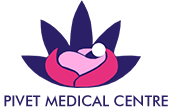The embryo is surrounded by a “shell” known as the zona pellucida. For an embryo to implant in the uterus, it must hatch or break out of this shell. In some situations, this shell can become thickened or hardened preventing natural embryo hatching from occurring. Assisted hatching is a laboratory technique where scientists create a small hole in the zona pellucida, with a precisely directed laser beam, which allows the embryo to hatch out as it develops.
Assisted hatching has been used in clinics worldwide for a number of years and many babies have been born after its application.
Who would benefit from Assisted hatching?
There is currently no conclusive evidence to suggest assisted hatching improves the chance of pregnancy for all patients, however there is limited evidence to suggest that it may improve the chance of pregnancy for the following:
- women with three or more failed embryo transfers
- women over the age of 38
- women with a high baseline FSH level
- women whose embryos have an unusually thick zona pellucida
What are the risks associated with Assisted hatching?
Assisted hatching results in extra handling of an embryo, which means it must be removed from the optimal environment inside the incubator to be performed. Less handling of the embryo means less stress due to temperature and pH changes.
The laser used to create the hole also gives off heat. If not done correctly, the heat from the laser may damage cells of the embryo.

